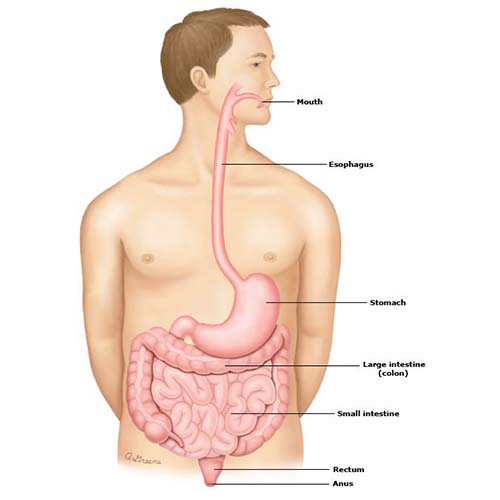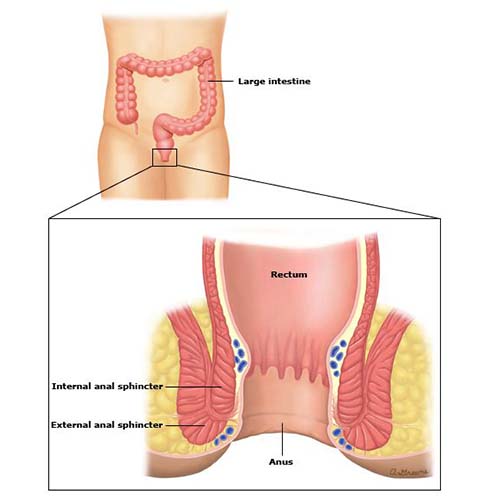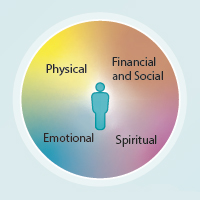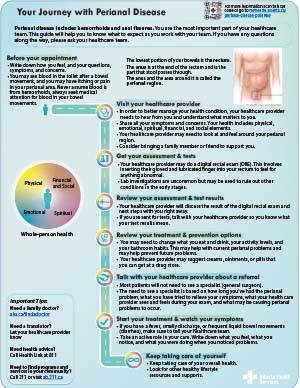This guide will help you to know what to expect as you work with your healthcare team to manage, treat, and prevent perianal problems.
You will have your own unique journey with perianal disease. How you move through your journey, the number of visits with your healthcare team, the steps you will take, and the order you take them in will depend on your needs. You will make decisions in partnership with your healthcare team. Always follow your healthcare team’s advice.
Even though perianal problems are very common, many people find them difficult to talk about. Your healthcare provider understands that perianal problems can be hard to talk about, and they are there to support you. Talking to your healthcare provider early can help make it easier to manage perianal problems and can prevent future problems.
What is perianal disease?
The anus and the area around it are called the perianal region. Perianal disease refers to a number of conditions or problems in this area, including
hemorrhoids and
anal fissures.

From Lexicomp and UpToDate Patient Handouts: Constipation in Adults, by Lippincott Advisor, 2023. Copyright 2023 by Lippincott.

From Lexicomp and UpToDate Patient Handouts: Anal Fissure, by Lippincott Advisor, 2023. Copyright 2023 by Lippincott.
When you are talking about perianal problems with your healthcare team, it can help to know the differences between body parts in the perianal region:
- Your anus is the small opening at the end of your intestines. It is the part that stool passes through.
- Your rectum is the part of your intestines inside of your anus.
- Your colon is the part of your intestines just above your rectum.
Whole-person health
The whole-person health approach will help you and your healthcare team better manage your health condition.

Whole-person health draws from the teachings of the medicine wheel. It means thinking about all parts of your health and wellness:
- physical
- financial and social
- spiritual
- emotional
These parts are all connected and impact each other. It’s important to be aware of your personal needs in each part and to share that information with your healthcare team. Your healthcare team needs to understand who you are and what matters to you.
Support and resources
- If you need a family doctor, visit Alberta Health Services:
Find a doctor.
- If you need a translator, let your healthcare provider know.
- If you need health advice any time, day or night, call Health Link at 811.
- If you need to find programs and services in your community, call or text 211 or visit
211 Alberta.
For more information about perianal disease, visit the
Canadian Digestive Health Foundation.

Perianal Disease Pathway
Download or print the
full patient pathway (PDF) and
summary (one-page PDF) to learn more about how to prevent, manage, and treat perianal problems.
Patient Pathway  Summary
Summary 
